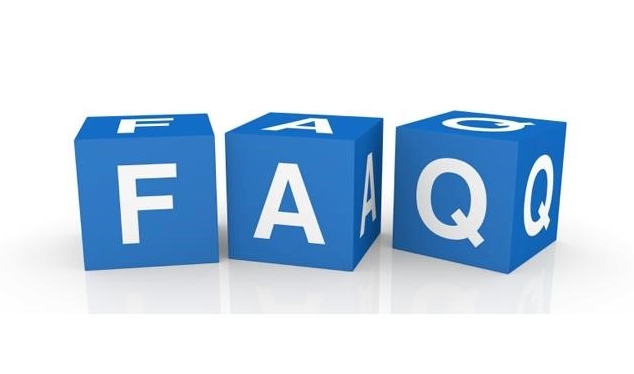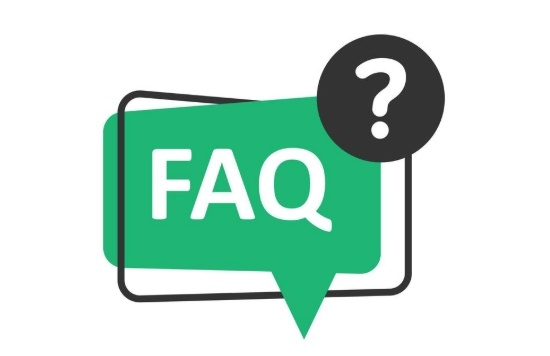The key to drawing a flow chart is to clarify the logical order and step relationship. First, clarify the target audience and process scope, determine the starting point and end point, and split the process into large blocks and then refine it; secondly, select appropriate tools, such as Draw.io or PPT for simple drawing, and professional tools for long-term collaboration; then use standard symbols and maintain a unified style, such as rectangular representation steps, diamond representation judgments, arrows represent directions, and no more than 2 to 3 colors; finally arrange them in logical order, from top to bottom or from left to right to avoid cross-confusion, merge modules or use connectors to optimize layout if necessary.

It is actually not difficult to draw a flow chart. The key is to clarify the relationship between the logical order and the steps. Whether it is used to sort out workflows, plan projects or teach demonstrations, a clear flow chart can make people see at a glance. Below are some practical methods and suggestions to help you create a useful and beautiful flow chart.

Clarify goals and scope
Before you start drawing, think clearly about who your flowchart is for? Is it used within the team or reported to leaders or clients? Different audiences determine the level of detail you need to present.

for example:
- Internal use can focus more on operational details;
- Showing customers may require simplification of language and highlighting the main nodes.
At the same time, we must also determine the starting point and end point of the process, and do not stuff too much irrelevant content into it. A small trick is: first break the entire process into several large pieces, and then refine each part .

Choose the right tool
Nowadays, there are many tools that can draw flow charts, and the commonly used ones are:
- Online tools : Draw.io (completely free), Lucidchart, ProcessOn
- Office software : Microsoft Visio, PPT built-in drawing function
- Professional software : such as Gliffy and Creately, suitable for users who need advanced collaboration functions
If you just temporarily draw a simple flowchart, it is recommended to use Draw.io or PPT directly, which is quick to get started and no additional installation is required. If it is used for a long time or if it is collaborated by multiple people, you can choose a tool that supports cloud saving and commenting functions.
Use standard symbols to maintain a unified style
While you can design your own graphics, using standard flowchart symbols can make it easier for others to understand your graphics. Common symbols include:
- Rectangle: represents a specific operation step
- Diamond: indicates a judgment or decision point
- Rounded rectangle: usually used for start or end
- Arrow: indicates the process direction
It is also important to maintain a uniform font, color and line style. If the flowchart is too fancy, it will affect the reading experience. It is recommended to use only 2 to 3 colors to emphasize the key parts, and try to keep the others simple .
Arrange in logical order to avoid cross-confusion
The most important thing in the flowchart is the "process", so it must be arranged in the order in which it actually occurs. From top to bottom, or from left to right, is the most intuitive way.
If you find that the arrow lines cross too much and look messy, then you have to consider re-layout. You can try:
- Merge or split certain modules
- Change the position order of the figure
- Use connector instead of long segment
Sometimes it is more efficient to draw sketches first on paper and then convert them into electronic versions.
Basically that's it. Whether the flow chart is drawn well depends not only on the technology, but also on the idea. As long as the structure is clear, the symbols are standardized, and the expression is accurate, it is a qualified or even excellent flow chart.
The above is the detailed content of How to make a flowchart. For more information, please follow other related articles on the PHP Chinese website!

Hot AI Tools

Undress AI Tool
Undress images for free

Undresser.AI Undress
AI-powered app for creating realistic nude photos

AI Clothes Remover
Online AI tool for removing clothes from photos.

Clothoff.io
AI clothes remover

Video Face Swap
Swap faces in any video effortlessly with our completely free AI face swap tool!

Hot Article

Hot Tools

Notepad++7.3.1
Easy-to-use and free code editor

SublimeText3 Chinese version
Chinese version, very easy to use

Zend Studio 13.0.1
Powerful PHP integrated development environment

Dreamweaver CS6
Visual web development tools

SublimeText3 Mac version
God-level code editing software (SublimeText3)

Hot Topics
 How to create a system restore point
Jul 07, 2025 am 12:17 AM
How to create a system restore point
Jul 07, 2025 am 12:17 AM
System restore point setting methods include manual creation, dependency automatic creation, and management of storage space. 1. Manual creation requires system protection to enable in "Create Restore Point", allocate 5% disk space and click "Create" to name the restore point; 2. The system will automatically create restore points when installing updates or changing settings, but do not guarantee comprehensiveness; 3. The restore point occupies no more than 5% of the system disk space by default, and the old version will be automatically cleaned, and storage can be managed by adjusting the upper limit.
 What is a firewall and how does it work
Jul 08, 2025 am 12:11 AM
What is a firewall and how does it work
Jul 08, 2025 am 12:11 AM
A firewall is a network security system that monitors and controls network traffic through predefined rules to protect computers or networks from unauthorized access. Its core functions include: 1. Check the source, destination address, port and protocol of the data packet; 2. Determine whether to allow connections based on trust; 3. Block suspicious or malicious behavior; 4. Support different types such as packet filtering firewalls, status detection firewalls, application layer firewalls and next-generation firewalls; 5. Users can enable built-in firewalls through operating system settings, such as Windows Security Center or macOS system preferences; 6. The firewall should be used in combination with other security measures such as strong passwords and update software to enhance protection.
 How to turn off wifi on my router remotely
Jul 05, 2025 am 12:28 AM
How to turn off wifi on my router remotely
Jul 05, 2025 am 12:28 AM
If you want to remotely turn off the router Wi-Fi, you must first confirm whether the router supports remote management; if it does not support it, it can be achieved through a smart socket power outage; advanced users can also consider flashing in custom firmware. The specific steps are as follows: 1. Check whether the router has remote management functions, such as the manufacturer's supporting app or cloud management functions; 2. If it is not supported, purchase and set up a smart socket and remotely cut off power through its app; 3. For technical users, you can install firmware such as DD-WRT or OpenWRT to obtain remote control permissions. Different methods have their own advantages and disadvantages. Please weigh them according to your own needs when choosing.
 How to fix VIDEO_TDR_FAILURE (nvlddmkm.sys)
Jul 16, 2025 am 12:08 AM
How to fix VIDEO_TDR_FAILURE (nvlddmkm.sys)
Jul 16, 2025 am 12:08 AM
When encountering the blue screen error VIDEO_TDR_FAILURE(nvlddmkm.sys), priority should be given to troubleshooting graphics card driver or hardware problems. 1. Update or rollback the graphics card driver: automatically search and update through the device manager, manually install or roll back to the old stable driver using NVIDIA official website tools; 2. Adjust the TDR mechanism: Modify the TdrDelay value in the registry to extend the system waiting time; 3. Check the graphics card hardware status: monitor the temperature, power supply, interface connection and memory module; 4. Check system interference factors: run sfc/scannow to repair system files, uninstall conflicting software, and try safe mode startup to confirm the root cause of the problem. In most cases, the driver problem is first handled. If it occurs repeatedly, it needs to be further deepened.
 How to stop a program from connecting to the internet
Jul 07, 2025 am 12:12 AM
How to stop a program from connecting to the internet
Jul 07, 2025 am 12:12 AM
To prevent specific programs from being connected to the network can be achieved through system firewalls or third-party tools. 1. Windows users can use their own firewall, create new rules in the "outbound rules" to select the program path and set "block connection"; 2. Third-party tools such as GlassWire or NetBalancer provide graphical interfaces that are more convenient to operate, but pay attention to source reliability and performance impact; 3. Mac users can control networking permissions through the command line with pfctl or using LittleSnitch and other tools; 4. A more thorough way is to use the network outage policy. The whitelisting policy prohibits all programs from being connected to the network by default and only allows trusted programs to access. Although the operation modes of different systems are different, the core logic is consistent, and attention should be paid to the details of the path and scope of the rules taking effect.
 Why do I get a User Account Control (UAC) prompt every time
Jul 13, 2025 am 12:12 AM
Why do I get a User Account Control (UAC) prompt every time
Jul 13, 2025 am 12:12 AM
UAC frequently pops up because the running program requires administrator permissions or the system setting level is too high. Common reasons include installation of software, modifying system settings, running third-party tools and other operation triggers. If using an administrator account, UAC only confirms the operation and not blocks. The methods for reducing prompts include: canceling the program to run as an administrator, lowering the UAC notification level, using a standard user account, and starting the program through the task planner. It is not recommended to turn off UAC completely because it can effectively prevent malicious programs from tampering with the system. You can set the UAC to "notify only when the program changes the computer" to balance security and experience.
 How to change your name on Facebook?
Jul 13, 2025 am 12:03 AM
How to change your name on Facebook?
Jul 13, 2025 am 12:03 AM
The Facebook name change process is simple, but you need to pay attention to the rules. First, log in to the application or web version and go to "Settings and Privacy" > "Settings" > "Personal Information" > "Name", enter a new name, and save it; secondly, you must use your real name, it cannot be modified frequently within 60 days, it cannot contain special characters or numbers, and it cannot be impersonated by others, and the review does not pass the auxiliary verification such as uploading ID cards; it usually takes effect within a few minutes to 3 working days after submission; finally, the name change will not notify friends, the homepage name will be updated simultaneously, and the old name will still be displayed in the history record.
 How to update wifi router firmware
Jul 05, 2025 am 12:24 AM
How to update wifi router firmware
Jul 05, 2025 am 12:24 AM
Updating the wireless router firmware is necessary and easy to operate. 1. Updates can fix vulnerabilities, improve performance, and add functions; 2. Check and updates can be manually operated through the management interface; 3. During updates, you need to ensure stable power supply, use wired connections, avoid interruptions, and confirm model matching; 4. Some brands support automatic updates, and update once or twice a year.





